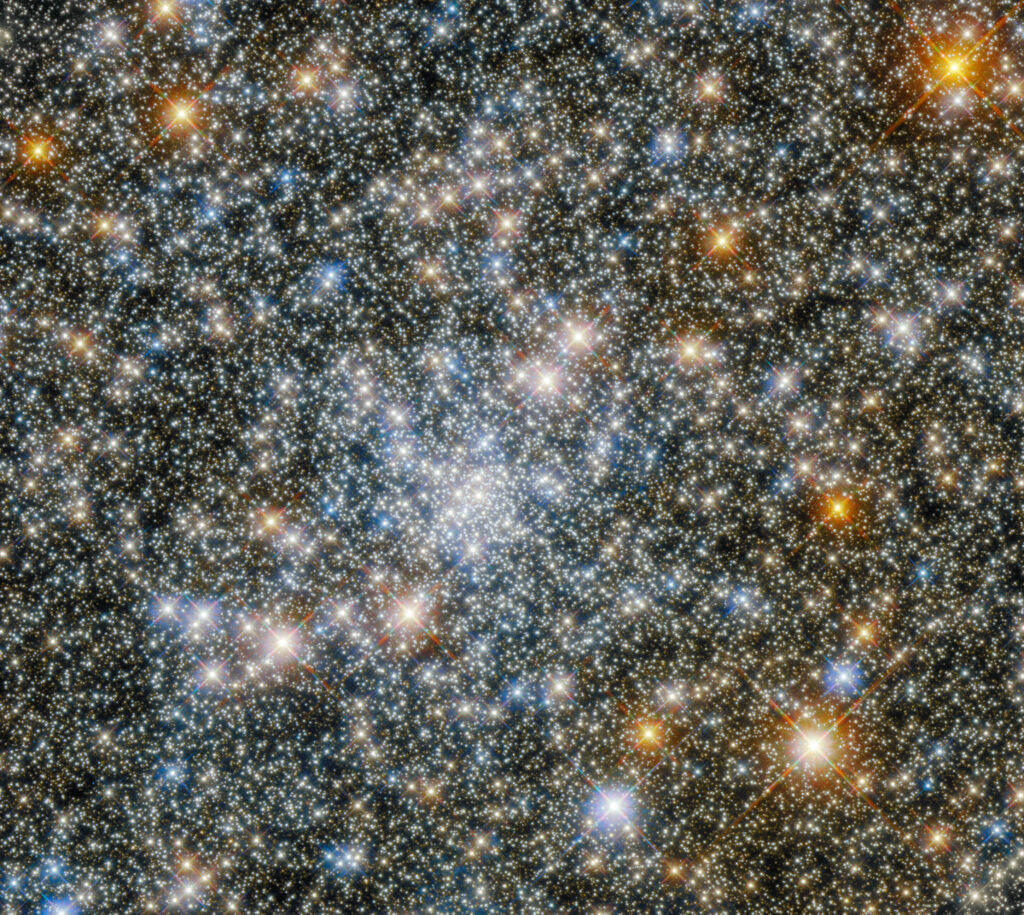This colorful image was posted on the Hubble mission website. The photo shows the globular cluster NGC 6540. It is located at a distance of 17 thousand light-years from Earth in the direction of the constellation Sagittarius.

Globular clusters like NGC 6540 are among the oldest objects in the Universe. They are groups of stars closely bound by gravity and orbiting the galactic center as a satellite. Their population can vary from tens of thousands to millions of luminaries.
The NGC 6540 image is composite. It is compiled on the basis of data collected by two Hubble scientific instruments — the WFC3 and ACS cameras. They have slightly different fields of view, so a section of the sky was taken for the photo, which was captured by both instruments.
It can be noted that the brightest stars in the Hubble image are “decorated” with cross-shaped light patterns known as diffraction rays. This is a characteristic optical effect, often observed in the images of reflecting telescopes. It occurs due to the diffraction of the light flux on the extensions supporting the secondary mirror.
Hubble looked into the heart of NGC 6540 to help astronomers measure the age, shape and structure of globular clusters at the center of the Milky Way. Gas and dust clouds in the center of our galaxy block part of the light from these clusters, and also slightly change the colors of their stars, which significantly complicates their observations. Globular clusters contain information about the earliest history of the Milky Way, so studying them can help astronomers understand how its development took place.
You can also read about how the James Webb Telescope photographed the most distant star in the Universe.
According to https://esahubble.org
Follow us on Twitter to get the most interesting space news in time
https://twitter.com/ust_magazine
